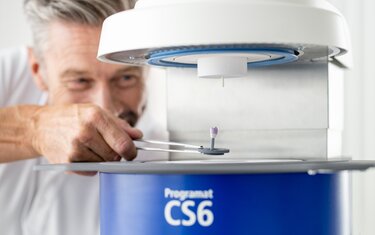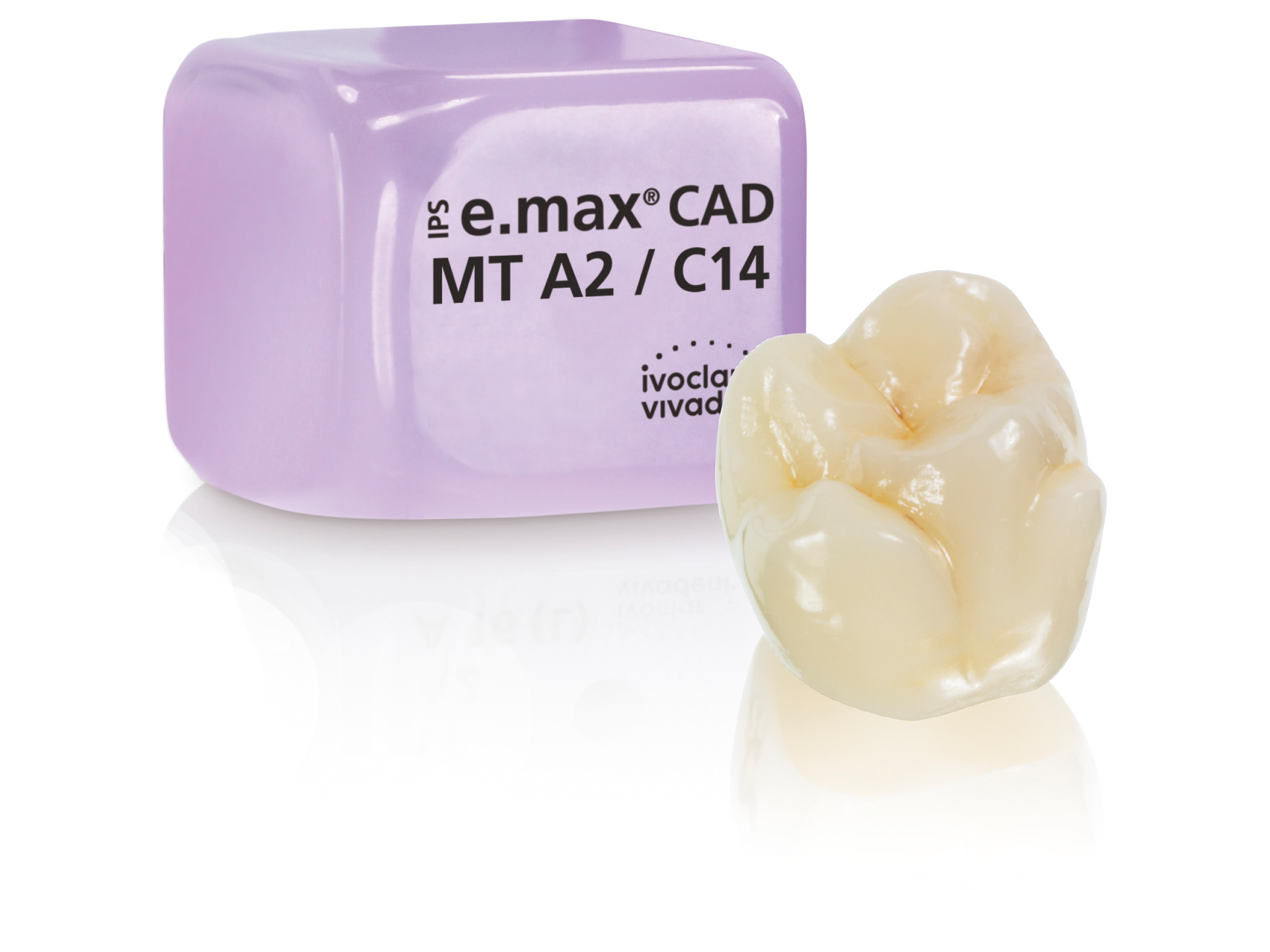The high strength and tough lithium disilicate glass-ceramic (LS2)
IPS e.max CAD is the world’s best-selling glass-ceramic[2]. The lithium disilicate material offers a high biaxial flexural strength of 530 MPa[3]. In addition, it shows a high fracture toughness of 2.11 MPa m1/2[4].
IPS e.max CAD is now faster than ever before with the new Programat CS6[1]
Learn more about how to speed up your practice with IPS e.max CAD
Download your free copy
How you benefit:
More than 10 years of ongoing quality testing show that IPS e.max CAD offers a high biaxial flexural strength of 530 MPa[2]. In addition, it shows a high fracture toughness of 2.11 MPa m1/2[3]. This combination is particularly sought after in minimally invasive dentistry.
Clinical long-term success and scientifically documented results – the blue block has been on the market since 2005 and has since proven itself clinically[4-6].
With the Programat CS6 combination furnace, IPS e.max CAD restorations can be crystallised faster than ever before with highly-esthetic results.
From crowns, occlusal veneers, and inlays to hybrid abutments – IPS e.max CAD covers a unrivalled scope of applications in CAD/CAM glass-ceramics.
High aesthetic standards are fulfilled due to the four different levels of translucency, the A–D shades and the special Bleach and Impulse shades. The comprehensive range ensures excellent shade match.
IPS e.max CAD restorations can be cemented adhesively, self-adhesively or conventionally, depending on the restoration type[7-9]. This allows you to choose the appropriate cementation method for each clinical situation.
Download your copy today
* The range of products varies according to the different CAD/CAM system.
[1] Programat CS6, Superspeed crystallization, 11:10 Minuten, IPS e.max CAD HT, MT, LT, IPS e.max CAD Crystall./ Glaze Spray or Self Glaze technique, max. two restorations, R&D Ivoclar, Schaan.
[2] Based on global sales figures.
[3] Average biaxial flexural strength, Outcome after more than 10 years of ongoing quality testing, R&D Ivoclar, Schaan.
[4] Hill T, Tysowsky G, AADR/CADR Annual Meeting: 1672, 2016.
[5] Fasbinder et al., Study report, 2017b.
[6] Rauch A et al., Clin. Oral Investig. 2018, 22, p. 1763-1769.
[7] Boldt J, Spitznagel F. A, Dtsch. Zahnaerztl. Z. 2017, 72 (4), p. 319-325.
[8] Aslan Y. U et al., Eur. J. Prosthodont. Restor. Dent. 2019 (27), p. 131-140.
[9] Lyann S. K et al., J. Adhes. Dent. 2018 (20), p. 261-268.
[10] Schmitz JH, Beani M, J. Adv. Prosthodont. 2016 (115), p. 678 - 683.
[11] The survival rate of monolithic IPS e.max CAD posterior crowns was evaluated with the Kaplan-Meier method. The failure rate refers to technical failures like fracture and chipping, R&D Ivoclar, Schaan.
Addtional data on file.
CEREC®, inLab®, PlanMill® and ceramill® are not registered trademarks of Ivoclar Vivadent AG.

